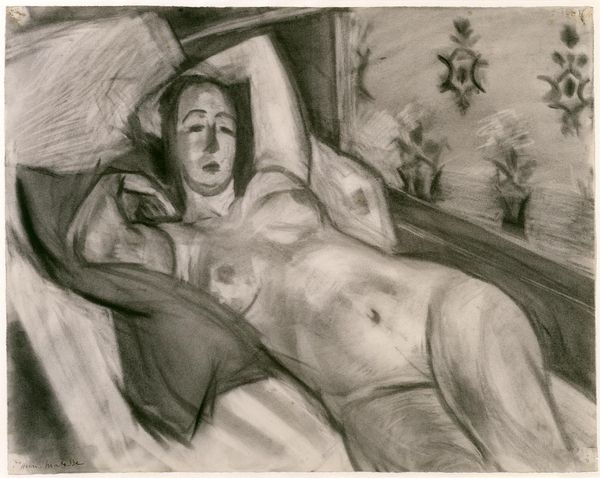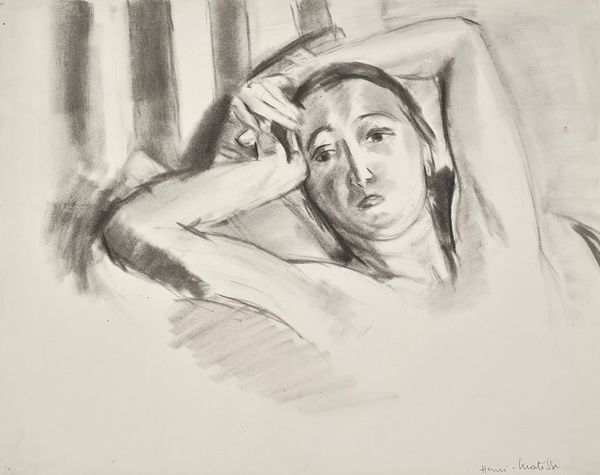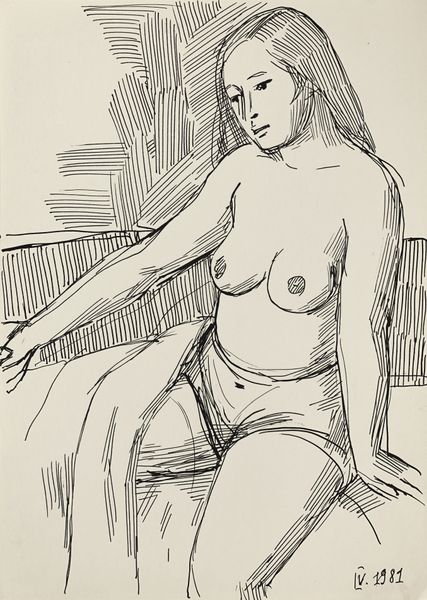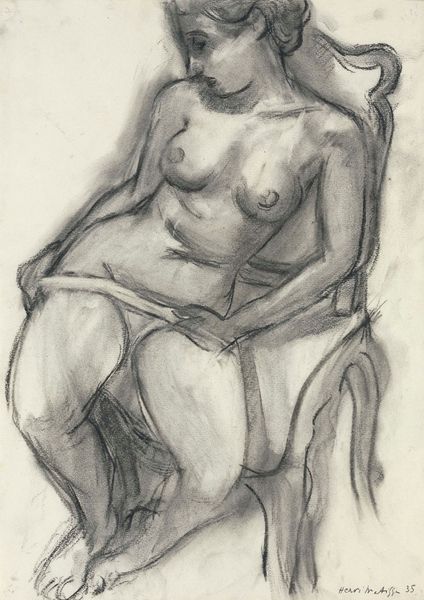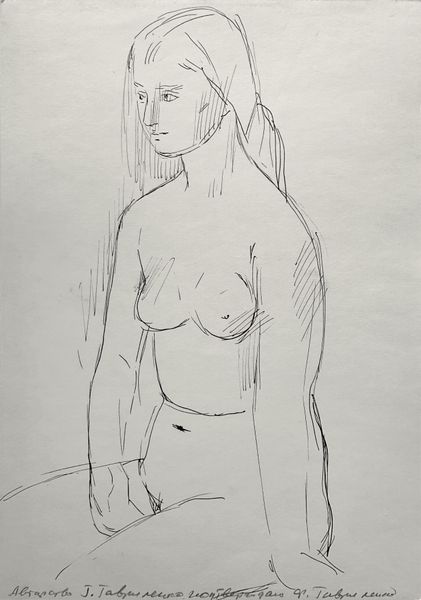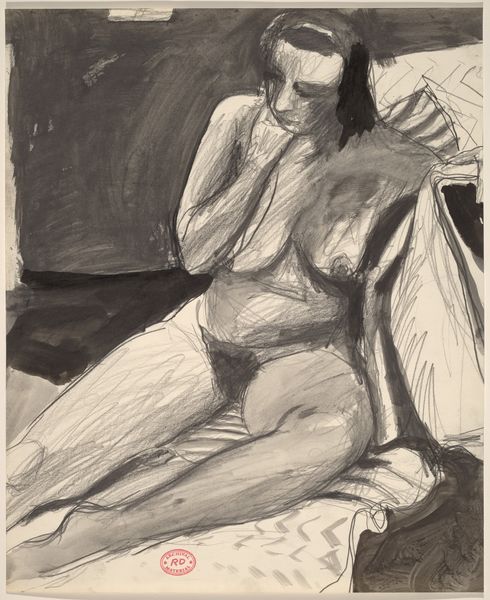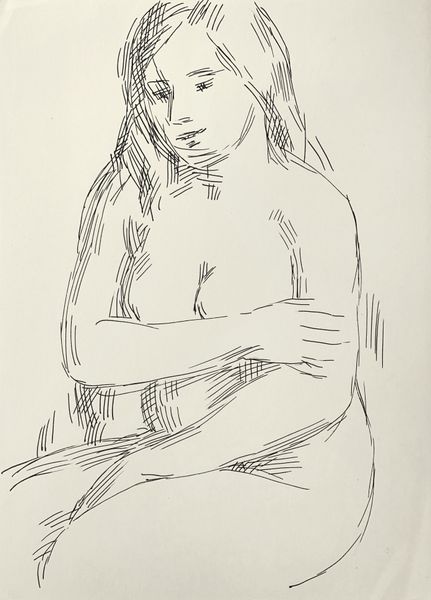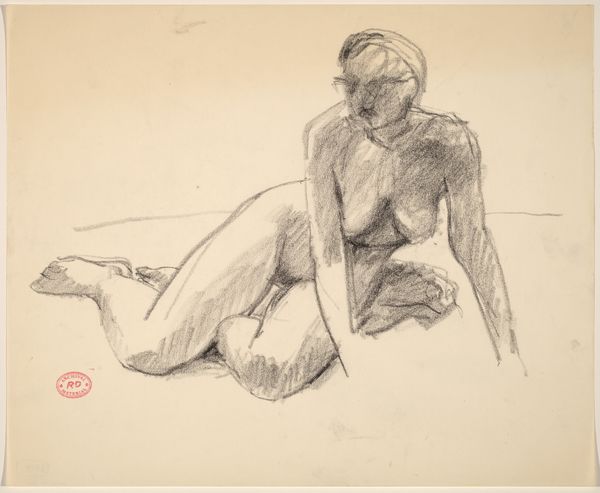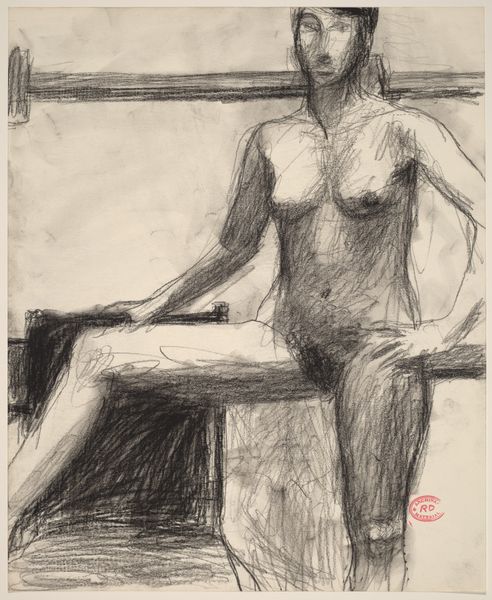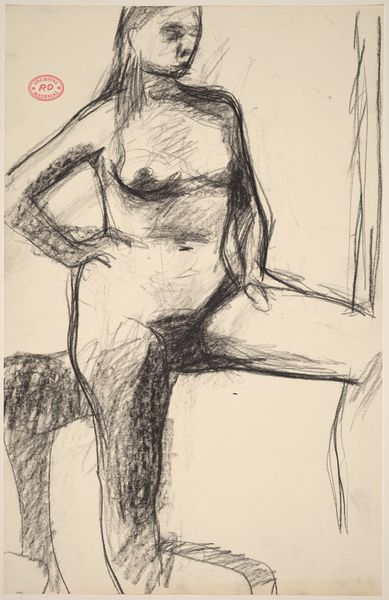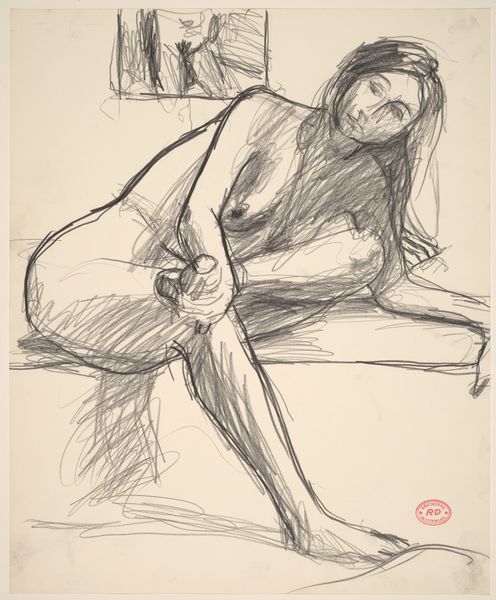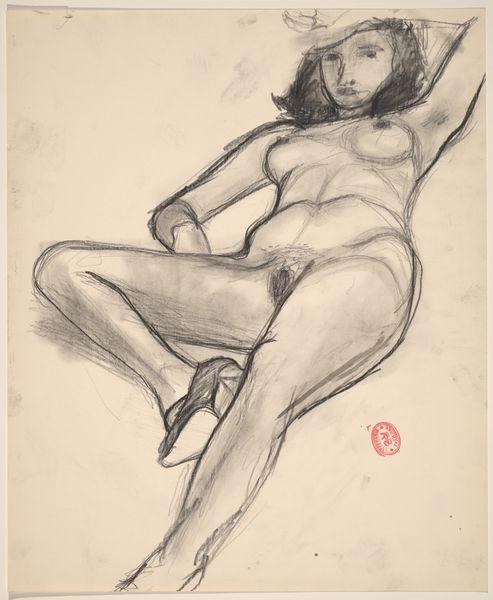
Copyright: Modern Artists: Artvee
Editor: Henri Matisse's "Grand nu au fauteuil," created in 1923 using charcoal, has a strikingly vulnerable mood. It’s almost as if the sitter's gaze invites you into a shared, quiet space. What strikes you most about this work? Curator: It's interesting you mention vulnerability. Look at how the arms are positioned behind the head – an invitation, certainly, but also a gesture of exposure. The nude, as a symbolic form, carries centuries of cultural weight. The relaxed pose could be seen as a modern echo of classical reclining Venuses, yet there's a directness here that rejects the romantic idealization of those earlier works. Editor: So, you see a deliberate break from tradition in how Matisse portrays the figure? Curator: Precisely. Think of the symbol of the chair. Traditionally, chairs signify authority, status, a "throne" of sorts. Here, it becomes merely a prop, a soft support that underscores the human element rather than elevating the figure. And charcoal itself – a fragile, erasable medium – contributes to the sense of ephemerality. Do you notice the tension between the permanence of the artistic act, the drawing, and the figure's inherent, mortal reality? Editor: That tension is palpable now that you point it out. I was so focused on the apparent ease of the sketch that I missed that contrast. Curator: The power lies in the simplification. Consider also the psychological weight of the gaze. The subject returns our stare with what seems a mix of confidence and questioning. Are we, as viewers, complicit in the act of observation? What meaning is created through our engagement? Editor: This reframes my understanding. I initially saw it as a simple study but now perceive layers of meaning. Curator: Exactly, it is in these subtleties where true symbolism often lies. Hopefully our audience is encouraged to bring these elements together in their own minds, now!
Comments
No comments
Be the first to comment and join the conversation on the ultimate creative platform.
